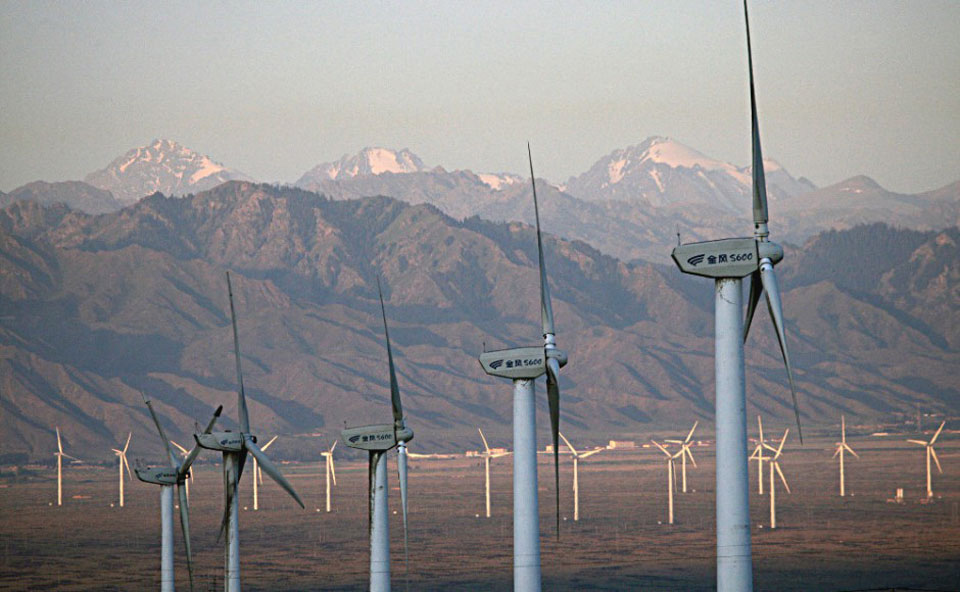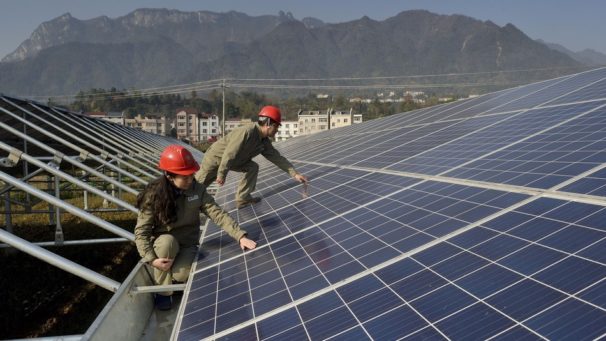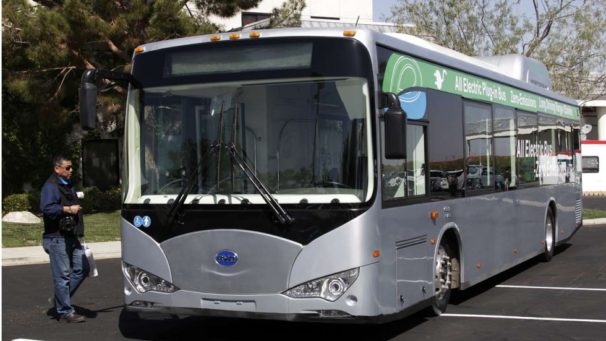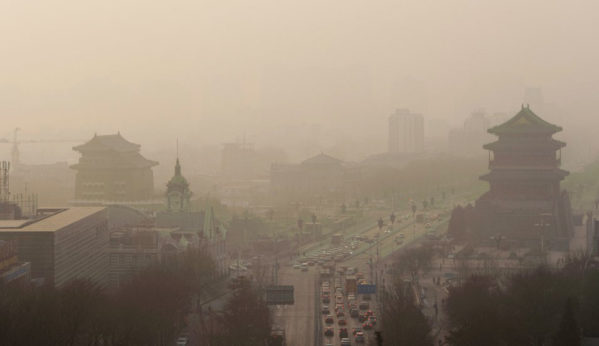
BEIJING – Record heat waves and massive forest fires are sounding the alarm – nature and humanity face an existential crisis. To avert the rapidly growing ecological crisis and adapt to the inevitable consequences of climate change, civilization is being urgently called on to act.
In one hopeful sign, an entire nation of 1.3 billion people, China, is accelerating steps to tackle the climate crisis and is on track to build an “ecological civilization.”
Development above all else
China has undergone staggering economic growth since 1978 when reforms introduced a socialist market economy and opened to the global capitalist economy. China has lifted 700 million people from poverty, surpassed the U.S. in retail sales and within a decade will become the world’s largest economy.
Until the last few years, economic development overrode every other consideration. Consequently, China paid an enormous price, above all else in environmental destruction. Greenhouse gas emissions skyrocketed, cities were choked with air pollution, and toxic wastes contaminated soil and water.
Severe environmental degradation from underdevelopment occurred even before the economic reforms of 1978. That same year, China extracted 618 million tons of raw coal, much of it consumed as household fuel. Coal consumed in the inefficient industrial process was mostly wasted. Both produced enormous pollution and acid rain from burning coal contaminated fresh water and soil over vast stretches.
In addition, desertification, soil erosion and lack of conservation decimated agricultural land and fishing grounds. Conversely, valuable grasslands and forests were lost through conversion to farms.
Clearcutting took place without reforestation and households burned much of the wood. Dams and water pollution caused fish stocks to plummet.
In addition, China had few trained ecologists to assess the destruction and develop sensible conservation policies.
For industrialization and modernization to succeed, these enormous problems had to be addressed. Even though a legal framework for environmental protection began developing in the 1980s, laws were largely ignored by foreign and domestic corporations in their drive for profit. Local governments seeking to attract and keep investment often looked the other way.
By moving so many of their operations to China and other developing countries, transnational corporations socialized and exported the costs of environmental destruction, reaping tremendous profits in the process.
Introducing the car culture created unbearable pollution in major cities. Smog caused as many as 1.6 million premature deaths each year.
Over the past 25 years China became the world’s dumping ground, receiving 25 percent of global plastic and paper scrap. The plastic waste stream finds its way to the Great Pacific Garbage Patch, including from four Chinese Rivers among the top ten emptying into the Pacific Ocean.
(China announced in January 2018, it would no longer import plastic waste from US and EU which has set off a mad scramble by the transnational waste corporations to find a new dumping ground.)
According to a study published by the Ministry of Land and Resources in 2015, as many as 100,000 industrial companies had closed or relocated since 2001, leaving behind huge amounts of untreated waste. Heavy metals contaminated about 8 percent of China’s arable land.
China’s international reputation suffered along with the environment. The fact that China was a socialist-oriented state did not guarantee a path of sustainable development.
Environmental movement and response
The ravages of development were plain to see and millions expressed their displeasure. It took a growing eco-consciousness and environmental movement in the 1990s and a response by Communist Party of China (CPC) and government leaders to insist that environmental protection laws be enforced and that new protections be created.
Scores of environmental NGOs were established, including Friends of Nature, which led the first nationwide campaign to save the Tibetan antelope. Other early victories included the scuttling of the Nujiang River and Tiger Leaping Gorge dam projects. The latter movement was started by farmers who would have been driven from the land.
Environmental groups began springing up on university campuses, often initiated by chapters of the Communist Youth League.
Today, environmental groups number in the thousands and are active at every level. “Environmental protection is a common concern of humanity,” said Wu Dengming of Chongqing Green Volunteer Association. “It has no discrimination of ethnicity, nationality, political systems, or class. We must not be divided. Only with everyone’s efforts can we save our Earth.”
China’s mass media is increasingly putting the spotlight on environmental problems, a practice pioneered by investigative journalists like Liu Jianqiang.
The CPC carefully studied the experience of the USSR, which promoted eco-socialism in its early development but after Lenin’s death adopted environmentally destructive policies, which intensified during the 1950s. In response, a conservation movement led by scientists emerged and grew influential over last 30 years of the USSR’s existence leading to more environmentally friendly policies (not withstanding the Chernobyl disaster). Meanwhile, Soviet scientists made pioneering contributions to the founding of climate science and global ecology.
The CPC realized environmental degradation was a threat to socialist development and the well-being of the Chinese people. It also drew from the rediscovery of the ecological writings of Marx and the further development of ecological Marxism, including the legacy of Soviet Marxism. Scholars combined this with traditional Chinese culture based on the intrinsic harmony between humans and nature.
Ecological Marxism is a correction of theoretical errors that trumpeted “man over nature.” Ecological Marxism sees society and humanity as part of nature. Development and sustainability go hand in hand.
In remarks to the CPC leadership in 2013, President Xi Jinping said, “We will never again seek economic growth at the cost of the environment.”
More recently, Xi stressed “To protect ecological environment is to protect [the] productive force. To improve the ecological environment is to develop productive force. A good ecological environment is the most just public product, one that most fully promotes the well-being of all the people.”
China has committed to a sustainable path and building an “ecological civilization” as a national strategy since the 17th CPC Congress in 2007. The goal is to form “an energy and resource efficient, environmentally friendly structure of industries, pattern of growth, and mode of consumption.”
The concept of “ecological civilization construction” was added to the CPC constitution during the 18th CPC Congress in 2012. It was placed on par with “economic, political, cultural and social progress.”

The adoption of several reforms in 2015 to accelerate the process addresses many of the country’s major environmental issues. “Proposals cover protection of natural resource rights; establishment of a national parks system; better and stricter systems for protection of arable land and water resources management; establishment of a green financing system; and improvement of environmental compensation mechanisms.”
Only an eco-socialist oriented society can move with such unity, purpose and speed toward sustainability. It helps that government and CPC leaders are deeply committed to building the ecological civilization and driving the process, including President Xi and Premier Li Keqiang.
Consequently, the CPC initiated a “war on pollution” just like its “war on poverty” which will be eliminated entirely in the next 3-5 years. With an overall economic slowdown, the priority has shifted from quantity to quality in production, environmental protection, and becoming a global leader in the fight against the climate crisis.
A law passed in 2014 to reduce CO2 emissions from coal power plants has resulted in a 14 percent reduction as of June 2018.
New measures adopted in May 2018 will result in “comprehensive recycling” of hard waste materials. China is one of a few countries to pass laws and develop a strategy to create a circular economy (reuse, recycling and remanufacturing).
The ministry of Ecology and Environment has identified 9 million sources of pollution, 7.4 million of them being from industrial sources.
China is doubling the previous target for solar power production by 2020 and is the largest producer of solar panels in the world.
Coal consumption peaked in 2016 and plans were halted to build 150 coal-fired plants. Installation of desulfurization and denitration filters on the remaining plants is nearly complete. Some plants have been brought online to address a surge in energy demand and CO2 emissions have increased. However, China has a coal power overcapacity and must reduce it in the long run.
China has initiated the world’s largest emission trading system, now directed at power generation plants and to be extended to the entire economy by 2020. Experts believe the system will allow China to reach peak CO2 emission targets (the level at which the Earth’s temperature rise can be halted at 2 degrees C) far earlier than the 2030 goal. And in fact, China reached its 2020 carbon intensity target three years ahead of schedule.
“The world has never before seen a climate program on this scale,” said Environmental Defense Fund president Fred Krupp. “It is important that the world’s largest emitter should lead on climate, and that is precisely what China is doing by launching its national emissions trading system. China has stepped up its climate leadership dramatically in recent years, and is now increasingly seen as filling the leadership void left by the U.S.”

Motor vehicles are the largest source of pollution in Chinese cities, but perhaps not for long. China produced more all-electric cars, buses and trucks than the rest of the world combined and production is growing faster than the rest of the world too. In a city I visited, Shenzhen, the entire fleet of 16,000 buses is electric. The government will install over 500,000 public charging piles across the country by 2020.
A 35,000-kilometer high-speed train network is half complete. The network is greater than that built by the rest of the world combined and will allow people to commute longer distances. The second generation of high-speed trains is being completely designed and built in China. I can personally attest to their sleek design and smooth and quiet ride. (story continues after video)

China is the biggest wind turbine producer in the world. The country is constructing 6 mega wind farms and in 2016 installed half the world’s new wind power.
China is carrying out the largest reforestation project in the world. Bad practices had reduced forest coverage to just 17 percent of China by the late 1970s. By 2017, over 22 percent of the country was covered and it will be increased to 26 percent by 2035.
This year, a mammoth project to reforest an area the size of Ireland is taking place. To do this, 60,000 soldiers from the People’s Liberation Army have been reassigned to plant trees.
A few years ago, regular sandstorms originating in Inner Mongolia plagued Beijing. The sandstorms have largely been contained by planting a Great Green Wall.
Industrialization meant not only massive pollution but urbanization of populations, which increased from 26 percent of the population to over 52 percent between 1991 and 2012.
Such rapid and massive development brought a myriad of environmental problems. In response, urban planners began developing the concept of Eco-cities, which will “bridge the human/nature divide, pollute less, use fewer resources, emit lower amounts of carbon, use renewable energy, recycle more, have a higher percentage of energy-efficient buildings, are set up for lower-carbon means of transport, and are posited as models for the way humanity will live next.”
Over 285 eco-cities are under construction or change.

Large parts of the cities I visited were full of greenery (planting trees is an old Chinese custom), and on a bus ride to Xiaogang Village from Fengyang County, a band of trees 75 feet wide on both sides lined the 50-mile highway. Rooftop solar panels power many homes.
At the 19th CPC Congress in October 2017, Xi called for accelerating the pace of change and to “step up efforts to establish a legal and policy framework … that facilitates green, low-carbon, and circular development,” to “promote afforestation,” “strengthen wetland conservation and restoration” and “take tough steps to stop and punish all activities that damage the environment.”
As the Trump administration ignores majority world opinion and pleas from the scientific community, withdraws from the Paris Climate Agreement, dismantles the EPA and regulations imposed by the Obama administration, and undercuts the shift toward renewable energy, China is thinking and acting big. This should give some hope the Earth and its inhabitants have a future.
Video by John Bachtell/PW











